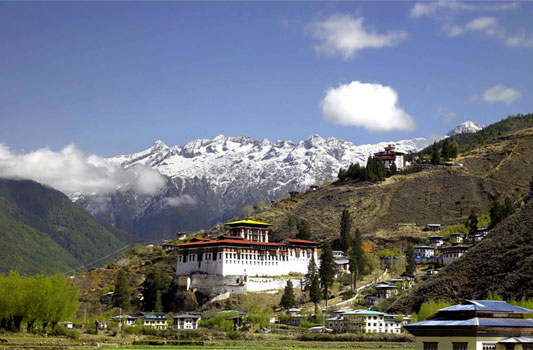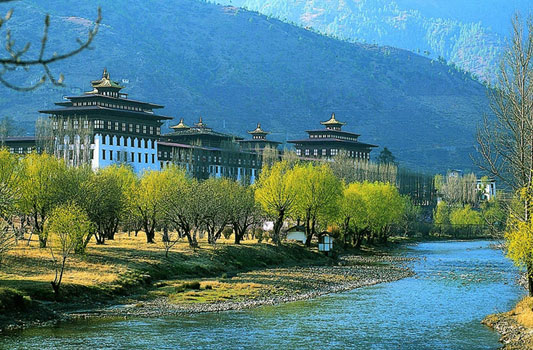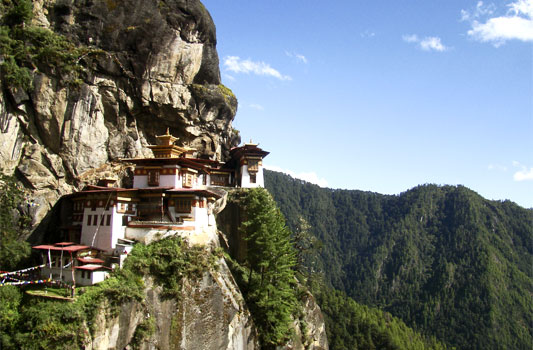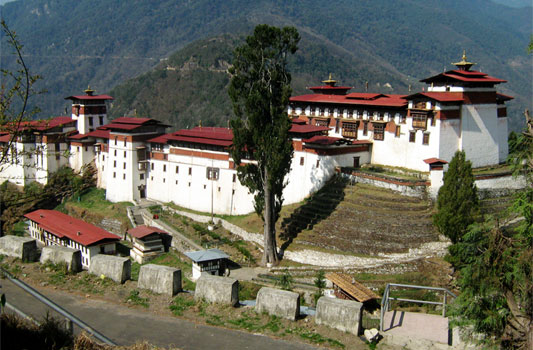What our guest are saying
Starting From $.00 per person
This is a fantastic West-to-East traverse tour covering the best of both sides of Bhutan so you don\’t miss out on anything.
This trek covers the National museum, Dungtse Lhakhang, Kyichu Lhakhang, the absolutely out-of-this-world Taktsang Monastery perched on a sheer cliff, most of the important Dzongs (forts), then there\’s the Memorial Chorten built in memory of the third King of Bhutan.
We cover Bumthang valley like no other. Bumthang is one of the most beautiful valleys in Bhutan.
This tour also a visit to Meber Tso or “flaming Lake” and the lovely Ura valley with its old dzong and cobblestone paths giving it a unique medieval feel.
This is a unique lovely tour covering all the important “must see, must visit” spots in Bhutan
Day 1: Traditional welcome at on arrival & airport transfers.
Day 2: Sight seeing in Paro
Visit the National museum (“Ta-Dzong”). This was actually the Watch Tower of the Paro Rinchen Pong Dzong. (Fort) We visit the Rinchen Pong Dzong. This massive fortress is located in the Paro valley and it houses the Administrative seat of the district of Paro. Also visit Dungtse Lhakhang and Kyichu Lhakhang.
Day 3: Continue Sight seeing in Paro
After an early breakfast, drive up to Satsam Chorten (10kms) for a short trek to Taktsang Monastery. The name Taktsang means “Tiger’s Nest.” The monastery is perched on a rocky ledge with a sheer drop of nearly 800m. and overlooks the Paro valley and the river. It is said that in the second half of the 8th century, Guru Padma Sambhava known as the second Buddha in Bhutan, meditated at the spot where the monastery is situated having alighted there on the back of a flying tigress.
Day 4: Paro – Thimphu
The drive to Thimphu (Capital) through the winding road along the Paro and Thimphu river takes about 2 hrs. On the way, we visit the Simtokha Dzong – one of the oldest Dzongs in Bhutan. It houses one of the largest monastic school in the country.
In the afternoon we visit the Memorial Chorten ( a huge Stupa ) built in memory of the third King of Bhutan. We also visit the Handicrafts Emporium where Bhutanese textiles and various other arts and crafts are displayed and can be purchased. No tour is complete without a visit to the Tashichho Dzong the main secretariat building. This massive structure houses part of the Government Ministries, the office of the King, the Throne Room and the office and the living quarters of the Monk Body and its Chief Abbot.
Day 5: Visit the National Library where a vast collection of ancient manuscripts are preserved, and also visit the Painting and wood craft school where children are taught the traditional art of wood craft and painting.
In the afternoon we proceed to Punakha/Wangdiphodrang (77kms) via Dochula Pass. Punakha was the former capital of Bhutan. The Punakha Dzong lies between two rivers known as Phochu and Mochu which means ” Male river and Female river “. Built in 1637 A.D., it is one of the most important Dzongs in Bhutan and now houses the District Administration office of the Punakha district and the winter residence of the Monk Body and its Chief Abbot.
13kms from Punakha lies the town of Wandiphodrang with its massive Wangdiphodrang Dzong. This Dzong also houses the District Administration office of the Wangdi district and the office and the living quarters of the district monk body.
Day – 6 Punakha – Trongsa
After an early breakfast, drive to Trongsa (142kms). Its a bit of a rough ride and because we drive slowly it takes about 6 hours to get there.
Day – 7 Morning: Visit the Trongsa Dzong and the Watch Tower.
Built in 1648 A.D., the Trongsa Dzong was the ancestral home of the ruling dynasty. It is also the district administration office of the Trongsa district. The view from the Dzong extends for many kilometers and in former times nothing could escape the vigilance of its watchmen. Furthermore, the Dzong is built in such a way that in the old days gone by, no matter what direction a traveler came from, he was obliged to pass by the Dzong.
This helped to augment its importance. The Ta-Dzong, an ancient Watch Tower of the Trongsa Dzong is located on top of a steep hill about 1 km beyond the Trongsa Dzong. The watch tower displays many interesting armors used by the Bhutanese soldiers during the olden days. We dine at a hotel and leave for Bumthang. The Journey which takes about 3 hours, passes by some of the most scenically beautiful routes in Bhutan.
Day – 8 Bumthang sight seeing:
Visit the historical Jakar Dzong – one of the biggest Dzongs in Bhutan. We visit several ancient and important monasteries such as, Jambay Lhakhang, Kurjey Lhakhang, Kencho Sum Lhakhang, Tamshing and Pema Samba Lhakhangs.
Day – 9 Drive to Sengor.
On the way we stop at Meber Tso (The flaming Lake) which is considered one of the most important pilgrimage spots. Visitors can drive up to Ura and take a leisure stroll in the clustered village of Ura. Ura has a beautiful Buddhist Monastery surrounded by typical Bhutanese farm houses which is worth seeing. You will also see yaks grazing in the rich pasture land of the Ura valley.
Day – 10 Drive to Mongar.
Mongar is a small town with a sprinkling of shops. On arrival we visit Mongar Dzong, a fort with impressive and beautiful architecture.
Day – 11 Drive over Korila Pass to Tashigang.
Tashigang is one of the largest district of Bhutan and an important commercial center. Indigenous people of Merak and Sakteng who are known for their exceptional features and for their costume made of Sheep skin and yak wool come to Tashigang for their daily requirements. You will be visiting Tashigang dzong which lies on top of a cliff and serves as the administrative center.
Day – 12 Excursion drive to Tashiyangtse and Gom Kora Temple.
Tashiyangtse is relatively a new town developed around Chorten Kora, one of the two chortens built in Nepalese style. Gom Kora chorten lies on the banks of the Gumri river. Guru Padmasambawa is believed to have subdued a demon in the form of a garuda at this place.
Day – 13 Drive to Samdrupdzongar.
On the way we visit Kanglung College (Bhutan’s only college), Zangtok Pelri and Khaling. Samdrupdzongar is a small, but important town of this region.
Day 14: After breakfast, drive to Gauhati (India) for your flight back home. [It\’s easier to catch your flight from Gauhati in India rather than travelling all the way back to Paro.
With the exception of visitors from India, Bangladesh and Maldives, all other visitors travelling to Bhutan need a visa.
Indian, Bangladeshis and Maldivian nationals can obtain a permit at the port of entry on producing a valid passport with a minimum of 6 months validity (Indian nationals may also use their Voters Identity Card (VIC).
All other tourists must obtain a visa clearance prior the travel to Bhutan. Visas are processed through an online system by your licensed Bhutanese tour operator directly or through a foreign travel agent.
You are required to send the photo-page of your passport to your tour operator who will then apply for your visa. The visa will be processed by the Tourism Council of Bhutan (TCB) once the full payment of your holiday (including a USD $40 visa fee) has been wire transferred and received in the TCB bank account. Once received, the visa clearance will be processed within 72 working hours.
At your point of entry you will be required to show your visa clearance letter, the visa will then be stamped into your passport.
Online Regional Permit System
In order to streamline and facilitate smooth visitation by tourists from Bangladesh, India and Maldives, the Department of Immigration, Ministry of Home and Cultural Affairs and the Tourism Council of Bhutan have launched the Online Permit System. The system facilitates the online processing of permits for regional tourists through registered Bhutanese tour operators and TCB certified hotels. The facility is offered as an optional channel to process permits for visitors from the region and is applicable for entry from Paro and Phuntsholing. Visitors who use this facility will be able to obtain their permit clearances and route permits ahead of their arrival in Bhutan similar to international tourists.



